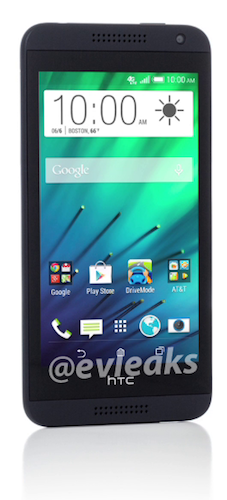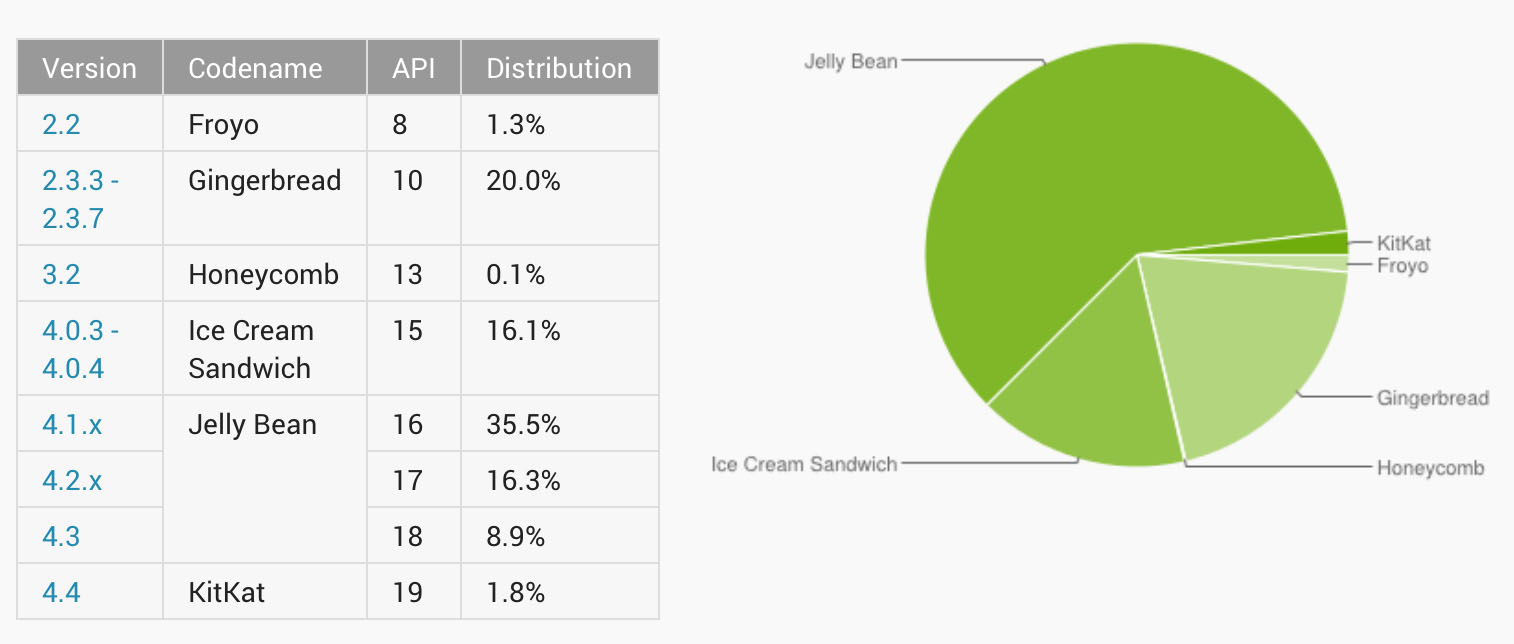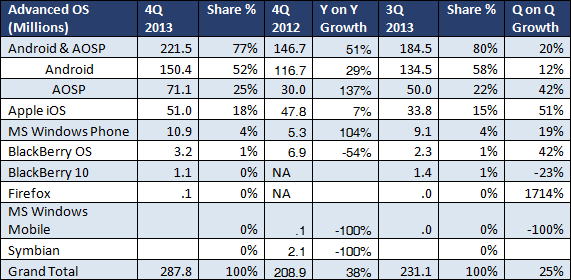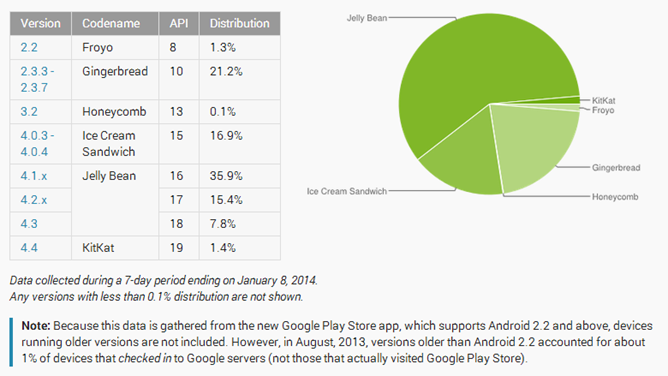
If you’re a developer looking to make some money on the Google Play Store, how do you figure out what sort of devices you need to target? Easy, just head on over to the Android Developer Dashboard and look at the latest data Google has to offer. According to to the newest figures on the website, it looks like Android 4.4 KitKat, the latest version of Google’s mobile operating system, is on 1.1% of all Android devices in use.
Moving on down to “Jelly Bean”, which is defined as anything running Android 4.1 to Android 4.3, they make up an astounding 54.6% of all Android devices. If you want to look at the specific versions of Jelly Bean, it’s 37.4% on Android 4.1, 12.9% on Android 4.2, and 4.2% using Android 4.3.

Yes, Gingerbread, better known as Android 2.3, is still on a quarter of all Android devices, but that’s not going to change until people in emerging markets start replacing their $50 throw-away smartphones with $99 throw-away smartphones that are powered by KitKat.
Speaking about emerging markets, all the numbers above come with one caveat. They’re for devices that connect to Google’s Play Store. Period. All those Chinese Android phones that ship with Chinese servers, they don’t count, which isn’t to say that segment of the Android market isn’t important, it’s just that Google doesn’t classify those devices as “Android” devices.
Do Android versions even matter anymore? That’s debatable. The type of people who are using devices running Android 2.3 probably couldn’t care less about the fact that their phone can connect to the internet. In fact, chances are they don’t even have a data plan because it’s too expensive in their part of the world.
And besides, if you’re a developer who wants to sell apps, don’t you want to make apps for people who have disposable income versus apps that can run on those $50 phones people who make less than $1,000 a year buy?



















